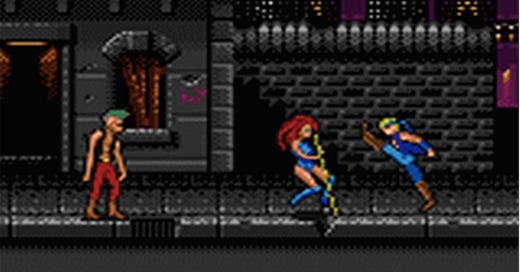My friend TW Lim (who writes an excellent newsletter about food and the restaurant industry) recently texted me from rural New Hampshire, where he had just driven past a martial arts studio called Twin Dragon Kung Fu that reminded him of the popular late-’80s Double Dragon video games (the place’s website is a different kind of time capsule, seemingly unchanged since 1996).
We discussed how Double Dragon embodied a vision of urban decay in ‘80s and ‘90s pop culture—one that was especially prevalent in video games and movies—and how that vision has since faded, along with the actual conditions that inspired it. As a kid growing up in Midwestern suburbia during the heyday of this urban aesthetic, I imagined cities as seething hellholes filled with graffiti, muscle-bound thugs who practiced martial arts, and subterranean warrens of Ninja Turtle sewers. This perception may have been exaggerated and stylized but it wasn’t entirely inaccurate, although I never found out firsthand (for some reason, it made a perfect setting for kid-friendly entertainment).
As the ‘90s progressed, this narrative of urban decay reversed itself, once again led by New York, which had exemplified both the gritty nature of the American city’s past and its glimmering 21st-century future. Rudy Giuliani’s tenure as NYC mayor from 1994-2001 encompassed the transition, taking the city from a den of violence and graffiti to its turn-of-the-millennium Sex and the City era. The ultimate evidence of the shift arrived with the post-9/11 zeitgeist, in which it was finally safe for a band like the Strokes to nostalgically unearth the bygone punk aesthetic that was being scrubbed from the city’s streets. Giuliani handed the keys over to Bloomberg at the end of 2001, who spent the next decade finishing what he had started.


